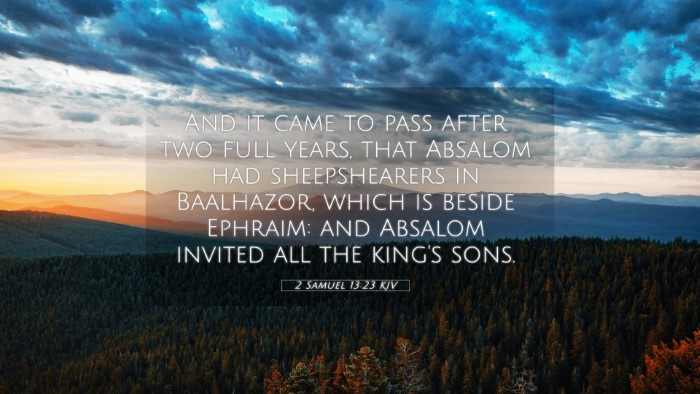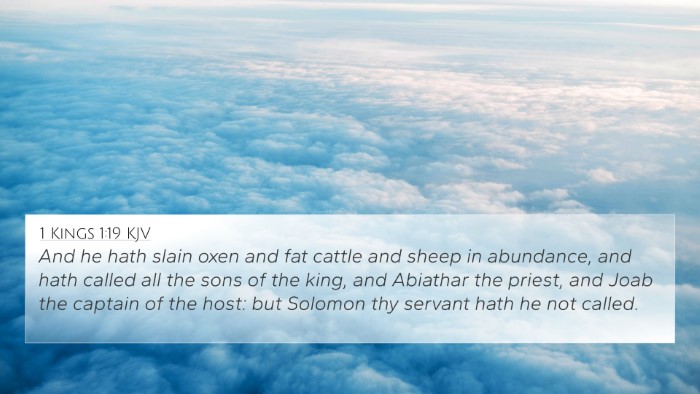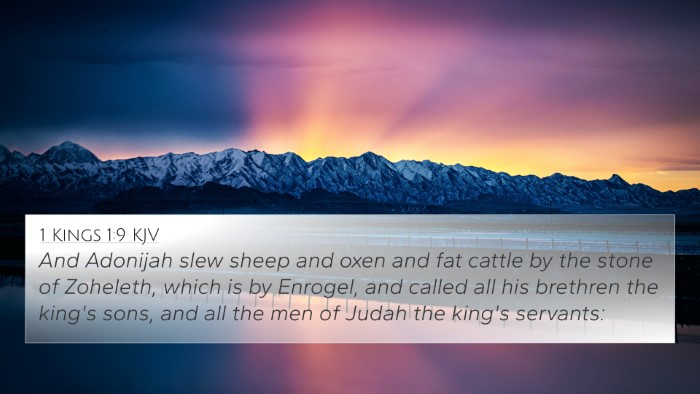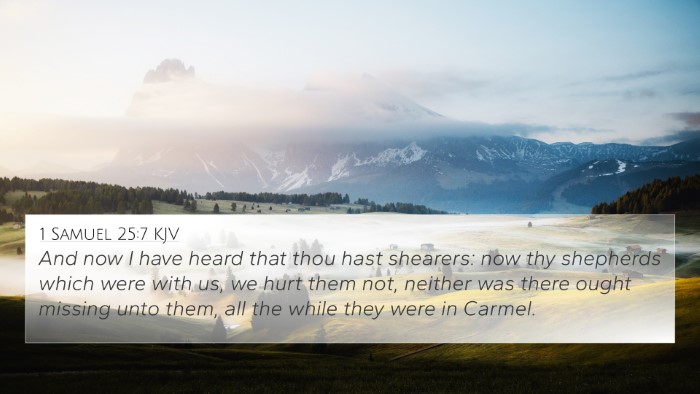Understanding 2 Samuel 13:23
2 Samuel 13:23 recounts a significant and tragic event within the life of King David's family, focusing on the incestuous actions of Amnon and the resulting family turmoil. This verse serves as a pivotal point in the narrative surrounding the consequences of sin and the moral decay that leads to devastating outcomes.
Verse Context
This verse states:
"And it came to pass after two full years, that Absalom had sheep shearers in Baal-hazor, which is beside Ephraim: and Absalom invited all the king's sons."
Here, we find that Absalom is preparing to take revenge on his brother Amnon, who had wronged their sister Tamar. The mention of “two full years” indicates a prolonged period of unresolved tension and bitterness within the family, highlighting themes of waiting, vengeance, and retribution.
Commentary Insights
Combining insights from Matthew Henry, Albert Barnes, and Adam Clarke, we explore the thematic elements of this verse:
- Matthew Henry's Perspective: Henry emphasizes the destructive nature of unchecked emotions and the stark consequences that arise from sin. He suggests that Absalom's actions, stemming from grief and vengeance, reflect the broader impacts of familial discord caused by Amnon's initial transgression.
- Albert Barnes' Analysis: Barnes notes that the gathering of the king’s sons for the feast reveals Absalom's cunning nature. The verse illustrates a critical turning point; the invitation signifies not just a gathering, but a calculated move towards revenge that foreshadows the tragic events to come.
- Adam Clarke's Commentary: Clarke draws attention to the symbolic nature of sheep shearing, which is traditionally a time of celebration. However, what should be a festive occasion is subverted by underlying hatred and betrayal, illustrating how sin distorts even the most joyous events.
Thematic Connections
This verse connects with several key biblical themes:
- Consequences of Sin: 2 Samuel 13:23 speaks to the long-lasting effects of sin within familial relationships. The consequences of Amnon’s actions lead to Absalom’s vengeance and further turmoil.
- Vengeance and Justice: The verse is encapsulated in the theme of revenge. Absalom's planning signifies a deep-seated quest for justice that ultimately leads to more violence and chaos, embodying Proverbs 16:18, "Pride goes before destruction, a haughty spirit before a fall."
- God’s Sovereignty: While it may seem that vengeance is at play, the underlying narrative suggests a divine orchestration of outcomes as seen in Romans 12:19, "It is mine to avenge; I will repay," explaining God's ultimate control over justice.
- Family Dynamics: The familial context established in this chapter showcases the complexities and struggles within family units, a recurring theme throughout the scriptures that highlights the need for reconciliation and forgiveness.
- Healing from Trauma: The tragedy surrounding Tamar's violation by Amnon underscores the necessity for healing and the perils of unresolved trauma capturing the essence of Ecclesiastes 3:3, "A time to tear down and a time to build.”
Cross-References to 2 Samuel 13:23
To deepen our understanding of 2 Samuel 13:23, we can look into various cross-references:
- 2 Samuel 13:1-2: Details Amnon's desire for Tamar, highlighting the root of familial trouble.
- Proverbs 6:32-33: Illustrates the consequences of adultery, paralleling Amnon’s sin with its repercussions.
- 2 Samuel 14:30-31: Reveals Absalom’s plotting and the gravity of his revenge against Amnon.
- Galatians 6:7: "A man reaps what he sows," speaking to the inevitable consequences of one’s actions.
- Numbers 35:33: Addresses the ramifications of murder and bloodshed, linking to Absalom’s planned actions.
- Psalm 26:10: Reflects on wickedness in families and the need for accountability.
- 1 Corinthians 10:12: Warns us to be careful lest we risk falling into sin as Amnon and Absalom did.
Inter-Biblical Dialogue
The interactions and themes presented in 2 Samuel 13:23 echo throughout biblical history and provide a rich landscape for comparative analysis with other scriptural texts, including:
- Genesis 34: The story of Dinah and Shechem parallels themes of sexual violation and subsequent revenge.
- 2 Samuel 15: Absalom’s rebellion against David reflects a culmination of fractured family loyalties brought about by past sins.
- Luke 17:3-4: Jesus’ teachings on forgiveness serve as a counter-narrative to the cycle of vengeance seen in this passage.
- Acts 7:9-10: Stephen recounts the history of God’s people, which includes themes of betrayal and family strife.
Tools for Further Study
To delve deeper into the verse’s meanings and contexts, consider using the following resources:
- Bible Concordance: Helps locate keywords and themes throughout the Bible.
- Bible Cross-Reference Guide: A structured approach to understanding biblical connections.
- Cross-Reference Bible Study: A method for exploring interconnected themes across scripture.
- Bible Reference Resources: Including commentaries and study Bibles that facilitate deeper exploration.
Conclusion
2 Samuel 13:23 offers a profound window into the dynamics of sin, vengeance, and the consequences within familial structures. By utilizing tools for cross-referencing and exploring related themes, one can garner a more robust understanding of the implications of actions taken by Amnon and Absalom, and the lessons that resonate throughout biblical texts.












